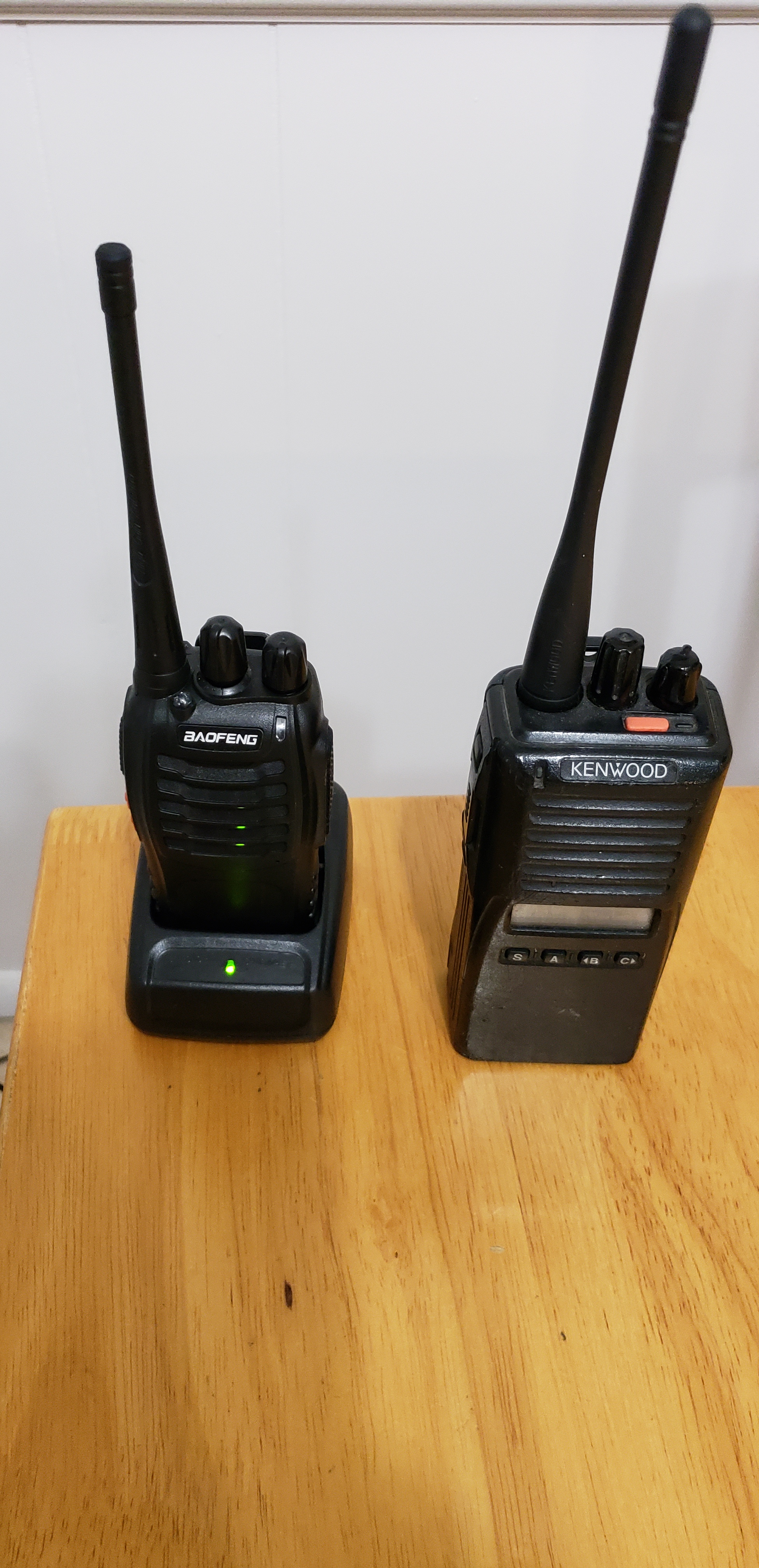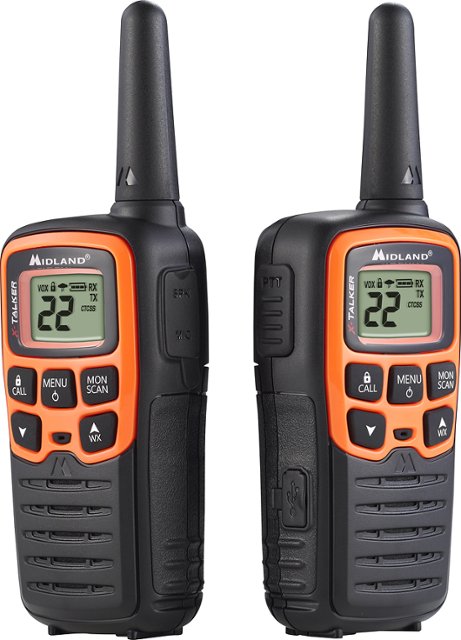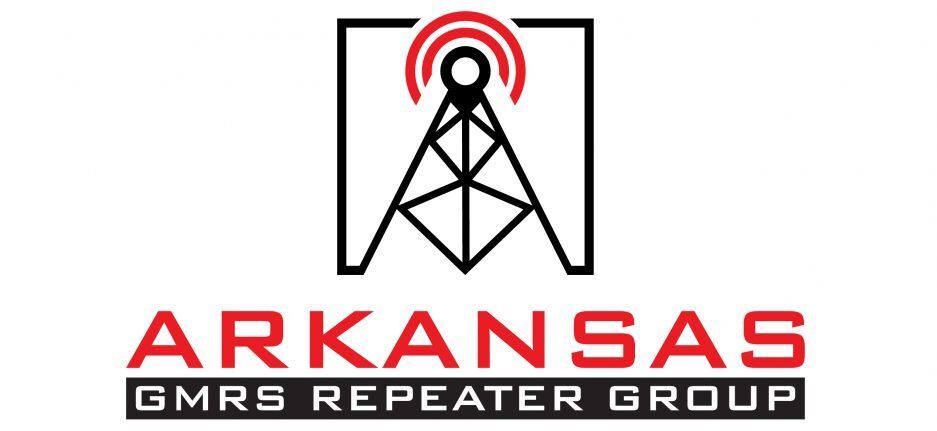The General Mobile Radio Service (GMRS) is a licensed radio service that uses channels around 462 MHz and 467 MHz. The most common use of GMRS channels is for short-distance, two-way voice communications using hand-held radios, mobile radios and repeater systems. In 2017, the FCC expanded GMRS to also allow short data messaging applications including text messaging and GPS location information. It is a licensed service that covers the licensee and his/her entire family including grandparents!
This is a great addition to any family or group’s daily, emergency, or back up communications needs!
It allows the use of repeater systems that can take low power portable and even mobile radios and send the signal over a larger area. This is great in both small towns and big cities in order to increase coverage for your family to use.
Who Can Use GMRS?
A licensee can use it with his/her entire family all under ONE license. This includes parents, brothers, sisters and in-laws! It is the perfect tool for families to keep in touch with one another.
Radios can be used with or without a repeater. For small area communications such as a department store or small campground, portable and mobile radios might work just fine. If you’re looking for coverage across the whole town, you might need a repeater to use.

What Are The Frequencies?
GMRS operates in the Ultra-High Frequency Band, otherwise known as UHF. From the FCC themselves, here are the channel/frequency allotments:
The GMRS is allotted 30 channels—16 main channels and 14 interstitial channels. GMRS stations may transmit on any of the channels as indicated below.
(a) 462 MHz main channels. Only mobile, hand-held portable, repeater, base and fixed stations may transmit on these 8 channels. The channel center frequencies are:
- 462.5500
- 462.5750
- 462.6000
- 462.6250
- 462.6500
- 462.6750
- 462.7000
- 462.7250
(b) 462 MHz interstitial channels. Only mobile, hand-held portable and base stations may transmit on these 7 channels. The channel center frequencies are: 462.5625, 462.5875, 462.6125, 462.6375, 462.6625, 462.6875, and 462.7125 MHz.
(c) 467 MHz main channels. Only mobile, hand-held portable, control and fixed stations may transmit on these 8 channels. Mobile, hand-held portable and control stations may transmit on these channels only when communicating through a repeater station or making brief test transmissions in accordance with §95.319(c).
Commonly called “Repeater Inputs”, The channel center frequencies are:
- 467.5500
- 467.5750
- 467.6000
- 467.6250
- 467.6500
- 467.6750
- 467.7000
- 467.7250
(d) 467 MHz interstitial channels. Only hand-held portable units may transmit on these 7 channels. The channel center frequencies are: 467.5675, 467.5875, 467.6125, 467.6375, 467.6625, 467.6875, and 467.7125 MHz.

If you’re curious about the rules in the GMRS, here is the complete link to ALL of the Part 95 Personal Radio Services rules below….
What does this mean for me?
We live in a well-connected world. Internet and cellular telephone has become ubiquitous in most every place in the US. However, there are many places that lack Internet/phone coverage that GMRS can fill in. It’s also real quick and convenient when traveling in multiple cars to talk to one another without dialing a phone! But even more so, GMRS does not rely on Internet and cellular telephone and many repeaters are stand alone systems that cover a great deal of real estate. This is great for families in the case of an Internet or phone outage to have as a backup for your family. GMRS isn’t there to replace other methods of communication, its there to supplement it. Lastly, it’s just fun! Using two way radio can leave your phone open for other calls and you just might meet some other like minded people and forge new friendships.
What do I look for in radios?
So, as a GMRS licensee, you have several options, including
- A Base Station; radio used in a stationary place such as your home or office. This radio is usually connected to a larger, outdoor antenna and can be used with or independently of a repeater within its coverage area.
- A Mobile Station; radios usually installed in vehicles. Radio is usually 10-50 Watts output and uses the battery supply of the vehicle and an antenna mounted to the vehicle by either a magnet, hole drilled or other bracket. Most of these types of radios can also be used as a base station also with a power supply and external antenna.
- A Portable Radio Station; radios designed to be carried on the person and/or hand held. Sometimes called a HT (handy-talkie) or portable. These radios are self-contained with battery and antenna.
Radios come in different sizes, shapes and capabilities. The absolute basics one needs to find in a radio for GMRS usage is:
- UHF or “Ultra-High Frequency”. Radios in VHF or “Very High Frequency” will not work here on GMRS.
- “Band split” (functional usable range) of either 438-470 Megahertz or 450-470, or 450-512 Megahertz. Be careful here. Sometimes radios come in 403-420 or 470-512 and these usually won’t work. The key to look for is that the radio works in the 462-467 Megahertz range.
- Some sample Models of radios that GMRS users purchase (samples below, any will work and depends on price and most will need programming) WE DO NOT ENDORSE ANY BRAND THIS IS JUST SAMPLE!
- Kenwood TK-350, TK-380, TK-3140, TK-3180, TK390 Portables
- Kenwood TK-880, TK8180, TK862 Mobile Radios
- Motorola GP300, Visar, HT750, HT1250, HT1000, CP200, MT2000, MTS2000 Portables
- Motorola Radius Mobile, GM300, MCS2000, CM300, SM50, SM120, CDM1250, CDM750 Mobile Radios
- Vertex VX-220, Icom IC-F6021
- The newer line of Chinese Radios like Baofeng 888, GMRS- V1.
- Midland makes a basic pre-programmed mobile radio called the MXT-400 that is repeater capable. They have been creating many newer repeater capable radios also and are a well known company. Be careful, they have other mobiles and portables that are less expensive BUT NOT repeater capable.

Some GMRS repeater owners and operators have software to program some of the radios above, thus the benefit of joining a repeater group! JUST ASK!!
|
|
